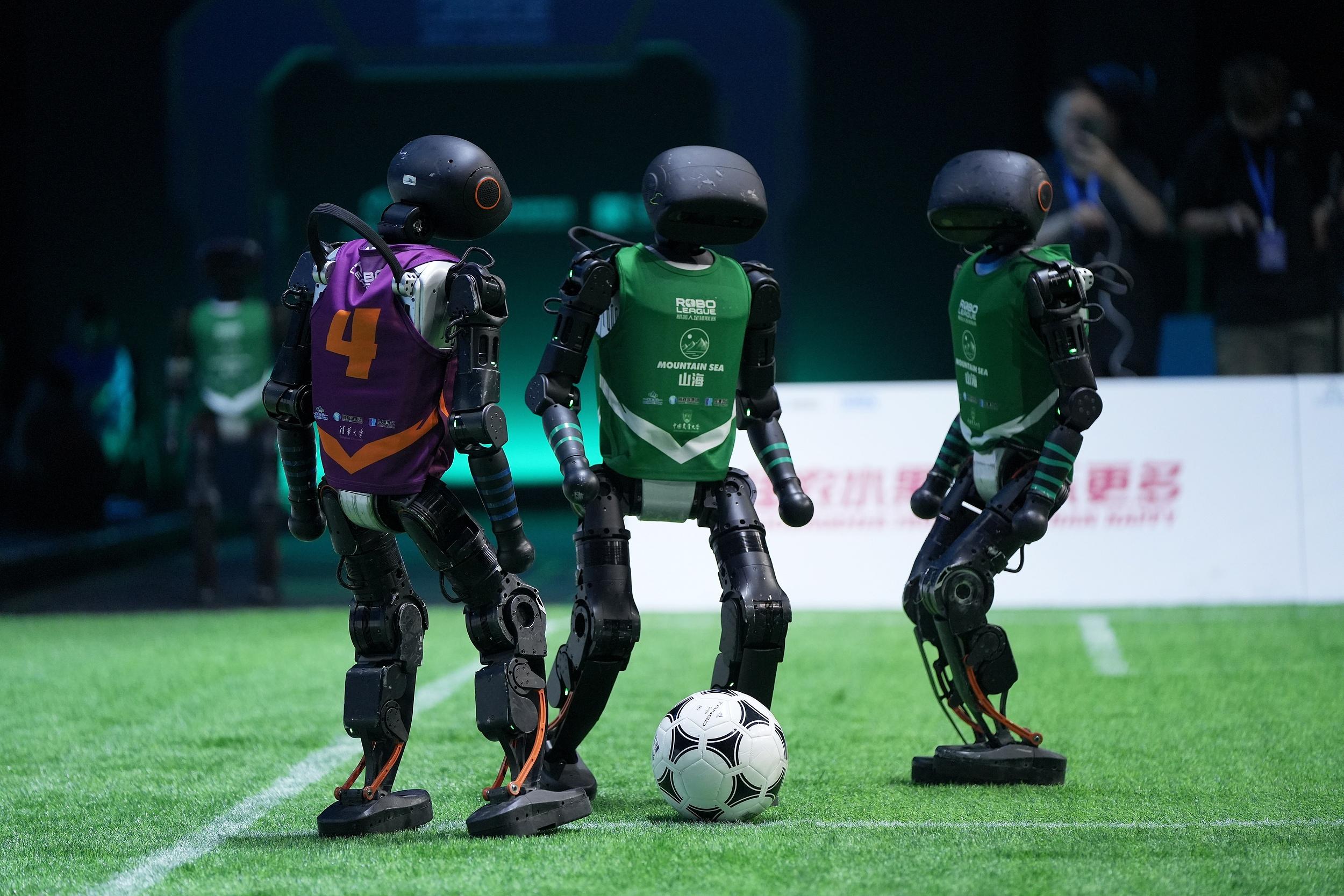Humanoid Robots Kick off AI Football

The final of the 2025 ROBO League robot football tournament was held at the Beijing Smart E-sports Event Center on June 28. It was not only a test run for the 2025 World Humanoid Robot Games, scheduled to be held in August, but also China's first fully autonomous 3v3 AI robot football match.
The participating robots incorporate highly complex real-time perception and cognitive decision-making, advanced motion control, multi-agent collaborative tactics, as well as agile, lightweight, and impact-resistant hardware bodies.
The four teams in the final used standardized robots provided with the same hardware bodies and underlying technologies. However, the AI strategies including gameplay rules, offensive tactics, and defensive maneuvers were entirely programmed by the team themselves.
A defining feature of this match was its full autonomy — unlike earlier robot marathons and boxing bouts that allowed remote control, these humanoid players could operate individually based on AI-driven strategies. Without any human intervention, they could independently execute complex actions, including recovering from falls and resuming play.
AI-powered autonomous robot players primarily rely on three core algorithmic systems: perception, motion control, and decision-making, according to Cheng Hao, founder of Booster Robotics and official robot supplier for the event. Perception algorithms enable robots to track the football's position and movement while monitoring teammates' and opponents' positions. Motion control algorithms execute physical skills like kicking, while decision-making algorithms determine optimal actions — whether to pass, defend, or collaborate with teammates, Cheng added.
The participating robots players demonstrated China's state-of-the-art breakthroughs in humanoid robotics, covering motion control, visual perception, positioning and navigation, decision-making systems, and multi-robot collaborative mechanisms.






